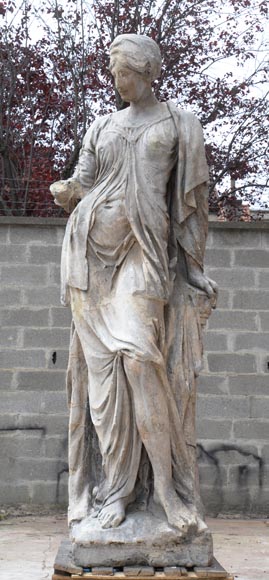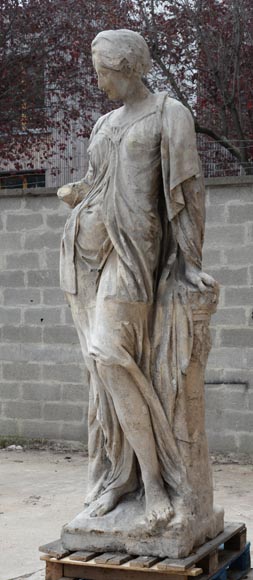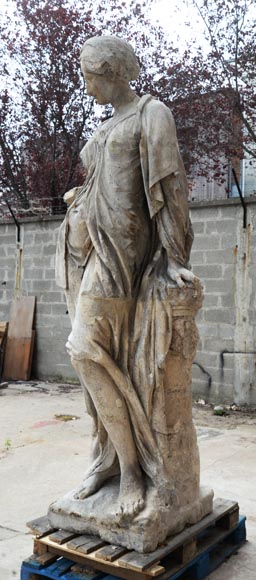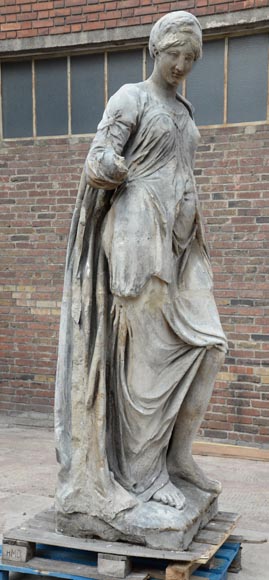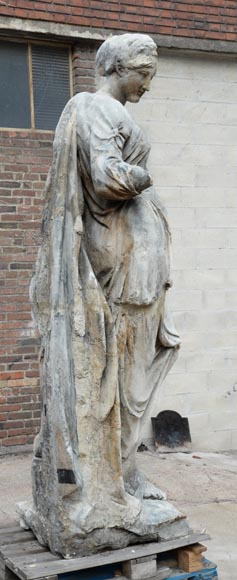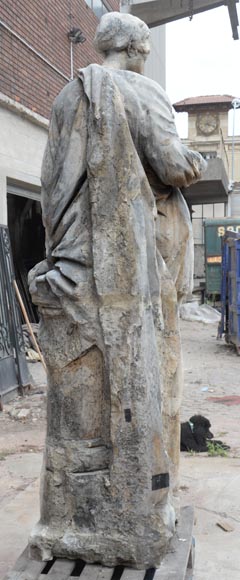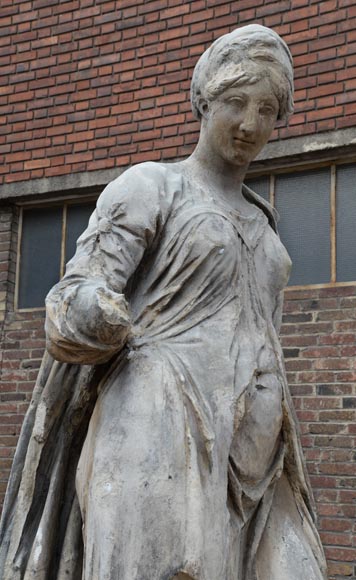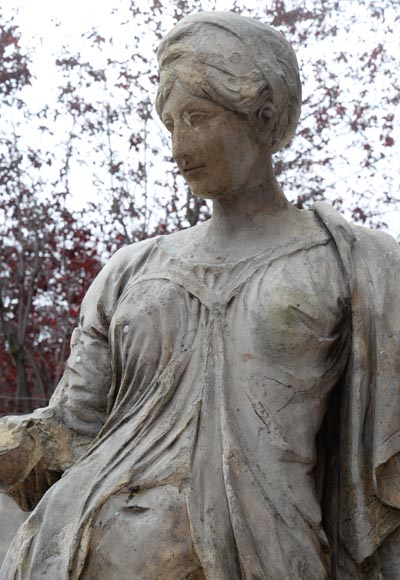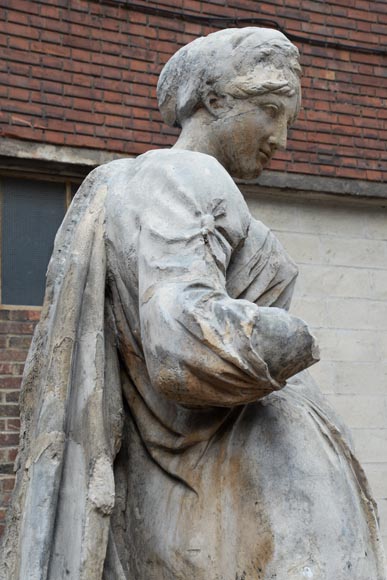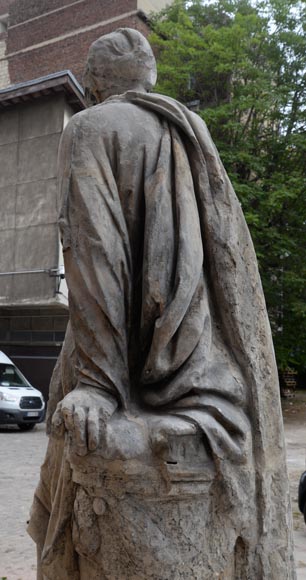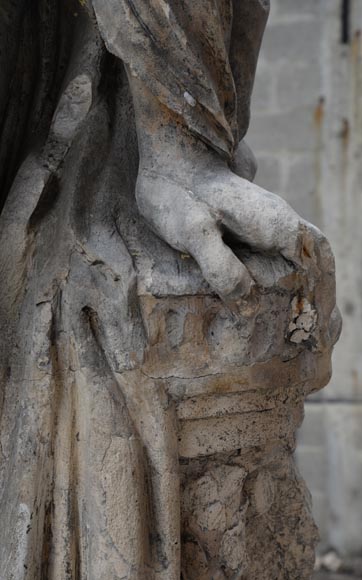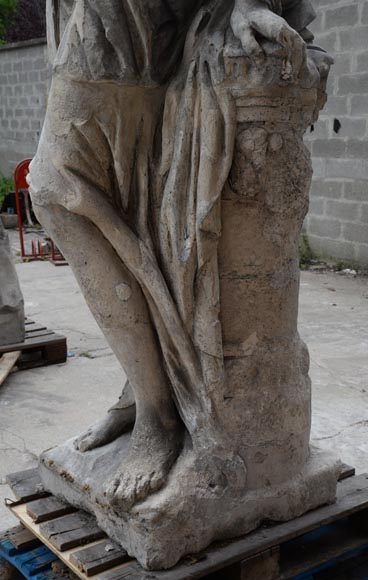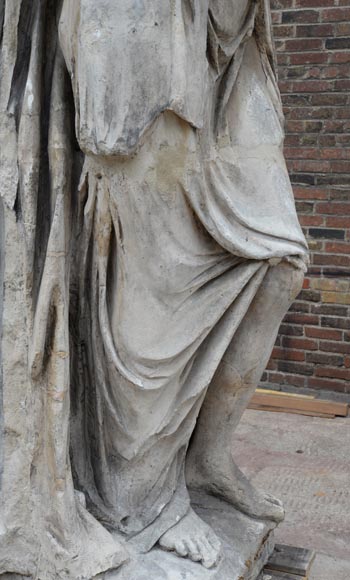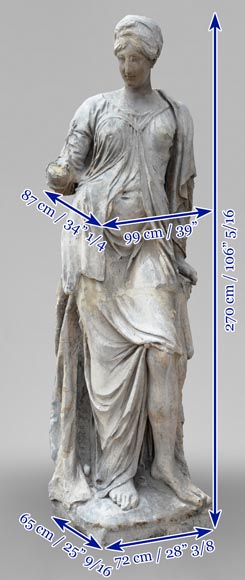Style Louis XVI / Ref.12387
French School, Impressive stone sculpture of a feminine allegory, End of the 18th century
Dimensions
Width 39'' 99cm
Height 106'' ¼ 270cm
Depth: 34'' ¼ 87cm
Origin:
France. 18th century.
This very large garden sculpture in stone is very likely a French work from the end of the 18th century.
Indeed, the return to Ancient time is installed in every form of arts in the late 18th century, following what the Counf of Caylus calls the “return to senses”. The European artists that are traveling to Rome in the Grand Tour context, and among them the sculptors, affirm and set the Neoclassical style by confronting themselves to the ancient vestige. From then on, they try to reach an ideal, timeless and universal beauty. The faces are no longer presenting real expression, the bodies are naked or draped, the sculptor showing his skill to represent the moving bodies, the muscles or the flesh sweetness.
We find these principles in the treatment of our sculpture. Indeed, we notice the sweet and symmetric face of the woman with the emerged smile, typical of the ancient statues as the hairstyle with the headband. Also her outfit, composed of ancient tunic with the wet drapery effect that is emphasizing the shape of her breast and make the navel appear. This style effect as the contrapposto – way of creating a wiggle thanks to the body weight resting on one leg – also allow the sculptor to show his talent in the realization of the pleats and drapery of the fabric.
The artist most likely wanted to sculpt an allegory, usually recognizable by the attribute they are holding in their hands or represented around them. Thus, we notice that the left hand of our sculpture is put down a small column. Few allegories are depicted in this position, we can then think of the Safety, the Constance or the Gravity. Nevertheless, the allegory of Safety holds in her other hand a spear, while the Constance allegory holds a gladiator sword and the Gravity is traditionally associated to the peacock feathers. Then it seems that the attribute that could have allow to name the allegory represented on our sculpture in a more certain way, was placed in her missing hand...
The impressive size of our sculpture, the use of stone, and the marks of time giving it charm, all indicates that its use was for the exterior, where it was adorning most likely a castle garden or a monument.
Informations
Price: on request
Recommended for you :
Dimensions:
Height: 212
Dimensions:
Width: 100
Height: 100
Depth: 53
Dimensions:
Width: 32
Height: 31
Depth: 31
Dimensions:
Width: 48
Height: 27
Depth: 49
Dimensions:
Width: 68
Height: 194
Depth: 56
Dimensions:
Width: 86
Height: 194
Depth: 44
Diameter: 44
Dimensions:
Width: 110
Height: 137
Depth: 82
Dimensions:
Height: 46
Inner height: 30
Diameter: 295
Dimensions:
Width: 49
Height: 89
Depth: 88
Dimensions:
Width: 57
Height: 134
Depth: 84
Dimensions:
Width: 186
Height: 276
Depth: 121




